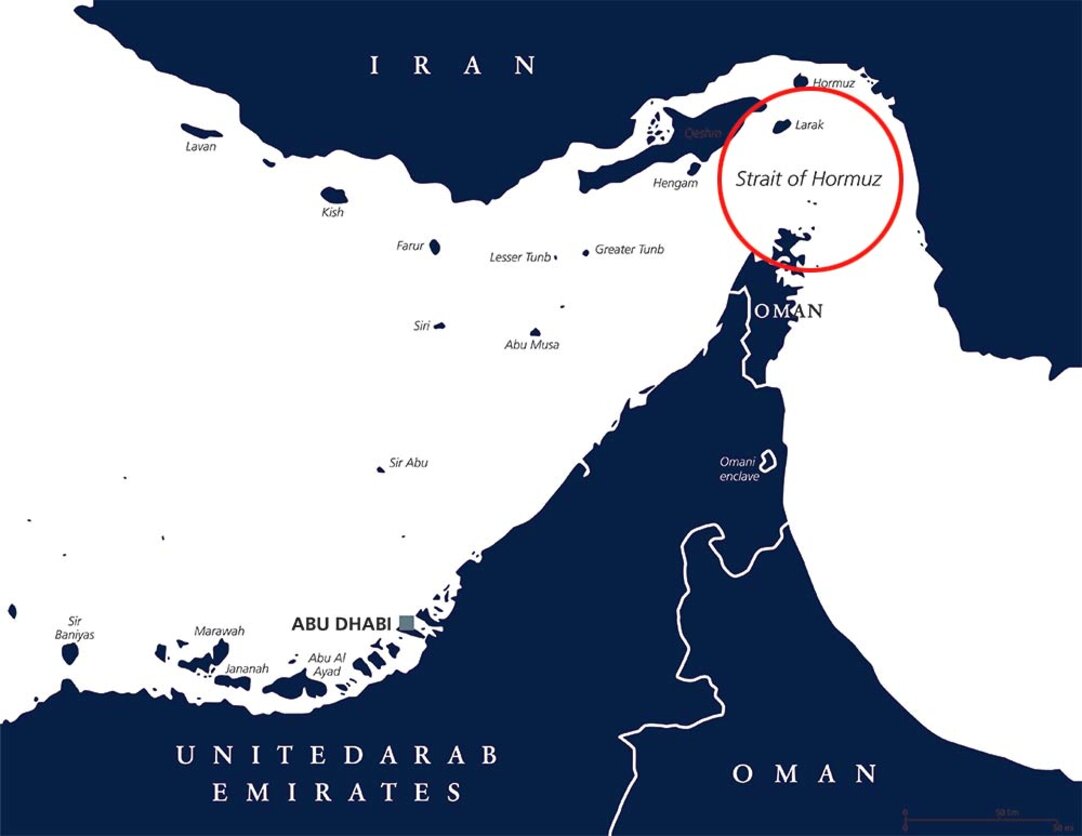How many attacks does it take to make the Strait of Hormuz unsafe?

Since May 2019, there have been six oil tankers attacked in the Strait of Hormuz, four on 12 May 2019 and two on 13 June 2019, all allegedly with limpet mines or drones/missiles. Despite these attacks, vessels are however still taking orders to sail through the Strait albeit at higher war risk insurance rates and no doubt heightened crew concerns. Whilst the occurrence of such attacks might lead to war risk clauses in the governing charterparties being invoked and the war risk insurers applying their own approach to the situation, at what point, under English law, can owners refuse such voyage orders on the basis that the Strait is contractually unsafe?
Reading time 6 minutes
Arecent London arbitration award obtained by Wikborg Rein for charterer clients confirms that refusing orders solely due to crew concerns about a conflict in the country of discharge is not justifiable without evidence of unsafety in the port of destination as opposed to merely in its vicinity. Whilst the award did not deal with the related issues as to how close or how often guerilla attacks had to be to make a port unsafe, English law has past cases that give guidance on this issue.
The “Evia”
The House of Lords in the “Evia” (No 2) [1982] 2 LLR 307 commented on this when finding that Basrah immediately prior to the outbreak of the Iran/Iraq war in September 1980 was a safe port even though border hostilities further north had started in June, and the war an abnormality that did not make it unsafe within the meaning of the time charter safe port warranty.
The “Ocean Victory”
The Supreme Court later provided clarification on what constituted an abnormality in the “Ocean Victory” [2017] 1 LLR 521, a case dealing with the safety of the port of Kashima, Japan in adverse weather conditions, saying it was something well removed from normal, which a notional charterer would not have in mind when making the order to go to the port. In this case, it was accepted that the possibility of long waves at the berth in Kashima, and of northerly winds preventing navigation on the fairway were both known, but the combination of the two at the same time which was causative of the loss was not, having never apparently happened in the previous 35 years, and was therefore an abnormality.
The “Saga Cob”
This begs the question of how many times the combination of events would need to happen in the past before it became less well removed from the normal and not an abnormality. The Court of Appeal in the “Saga Cob” [1992] 2 LLR 545, looked at this issue. It found that there had been long running hostilities in Eritrea for many years, with a frontline about 40-50 kilometers from Massawa port, and sporadic artillery attacks on the port every few weeks in the 5 months prior to the “Saga Cob” being ordered to Massawa. This was not considered enough to make the port unsafe.
However, there was also a risk of sea borne attack by guerillas which was known about at the time the order to Massawa was given by charterers (being the relevant time to assess the safety of the port under English law) because they had made such an attack 65 miles from the port almost 3 months previously, and it was another such attack that caused the loss once the vessel arrived at Massawa. Owners claimed this risk made the port unsafe, but the Court of Appeal found that the prior attack was abnormal, that apparently adequate precautions from further attack (involving naval escorts and convoys) were in place, and no further attack had happened by the time the orders were given to “Saga Cob”. There was therefore nothing to suggest that the risk of further attack had not been contained, so when it did occur, it was regarded as another abnormality and not a ground for treating the port as unsafe.
The “Saga Cob” decision therefore indicates that one prior occurrence when viewed in conjunction with apparent precautions against further attack does not make a repetition some months afterwards a matter of unsafety. However, what of a situation where there is one occurrence, such as a limpet mine attack, and no subsequent reassurance that a repetition had been contained?
The “Chemical Venture”
In this regard, the risk of possible successive attacks was considered in the “Chemical Venture” [1993] 1 LLR 508, which was another Iran/Iraq war case, this time 4 years after the “Evia”, when Iran started airborne missile attacks on vessels sailing to Kuwait. “Chemical Venture” was ordered to Kuwait 3 days before the first missile attack, with further two attacks occurring in the following 3 days. The crew demanded a war bonus in order to proceed, which was agreed by charterers 6 days after the attacks. The vessel then proceeded to Kuwait and was hit by a missile two days later. The judge held that at the time the order to Kuwait was reconfirmed by charterers as part of the agreement on crew bonus, the risk of attack was not abnormal, and would therefore have made proceeding to Kuwait unsafe. However, he also found that in negotiating the crew bonus, owners had waived their right to contend that charterers were in breach of the safe port warranty for Kuwait.
Analysis
It would therefore seem that individual attacks on three different days over a period of four days (as in the “Chemical Venture”) is enough, whereas one attack (as in the “Saga Cob”) is not, at least when the risk of further attack is thought to have been adequately contained. What then of the situation, such as at present in the Strait, of six known attacks on two separate days a month apart? If the attacks on each day are seen as a single event, or possibly even if they are seen as separate events, much will depend on the adequacy of the current precautions, led by the US 5th Fleet’s Sentinel Program, and the time delay since the last attacks in June. The authorities would appear to indicate that the better the precautions in place, and the longer the interval between attacks, the more likely any further attack could still be considered abnormal, particularly if there are no further attacks thereafter, a post-attack fact taken into consideration in both the “Saga Cob” and “Chemical Venture” cases.
However, given the Sentinel Program is presently understood to be relying mainly on the surveillance capabilities of the US destroyers patrolling checkpoints in the Strait, and is not (yet) insisting on vessels being escorted in convoy through the Strait, (the use of escorts and convoys appearing to have been a significant feature of the “Saga Cob” decision), it is not clear if English courts would regard such measures as adequate precautions should another attack take place in the near future, opening up the prospect of the Strait being considered contractually unsafe during the period of inadequate precautions. That said, given that several months have now passed since the last attacks, there is also reason to hope the current precautions are working and that further attacks will be prevented.

